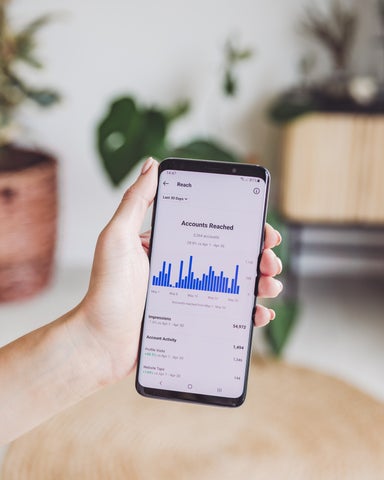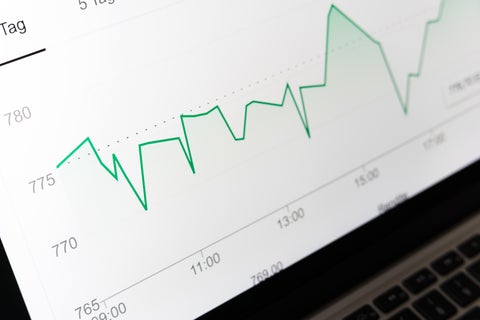How To Use Analytics For CPG Brands
Running a business today is all about digging into the data. Total sales, conversion rates, lifetime customer value, click-through rates, customer acquisition cost…the list for crucial analytics for CPGs goes on.
All of these metrics are important markers as to how well a business is doing, but you’d be forgiven for thinking they skew a little…digital.
In fact, if you run a CPG brand – especially in the food and beverage space – you probably think that metrics like these are either too tricky to tap into or just not very useful. The truth is that website analytics for CPG is just as important as in other verticals, and, in some cases, even more important.
In this guide, we’ll explain how to discover the CPG metrics that matter most to you, how to make sense of it in the context of your audience, and how to build a successful CPG analytics strategy for the future.
So, let’s get stuck in.

How To Make Analytics Matter for CPG
Just as every company operates in a unique way, so too are the analytics that matter to your CPG brand specific to you.
The trick is identifying those metrics so that you can maximize the value they deliver. After all, it’s no use knowing how many website visitors you’re getting if what you really need to know is how many of those visitors convert to real-world sales.
So where do you start identifying analytics for your CPG?
The best place to begin is by considering your complete customer journey. From initial contact with a prospective purchase to your product being in their hands. Note that you should include the full journey, both online and off, even if your sales are predominantly focused on the traditional CPG setting of bricks-and-mortar stores.
Within your customer journey there will be certain milestones, touchpoints, or events which you can easily turn into CPG analytics. Here are a few ideas to get your creative juices flowing:
Observational metrics
These are the things that your reps can observe on the shop floor as your product is being sold. Primary metrics may include stock levels, competitive presence, and even a measure of how the real-world layout compares to your planogram.
Activity data
This covers all the interactions between the customer and your product in a store setting. Meaningful metrics in this category might be total time customers spend interacting with a particular product and total interactions.
Sales data
This is the most straightforward: how many units of each key SKU are you moving through each particular store? This one is all about volume and, naturally, is one of the most important CPG analytics you can track.
Understanding Your Website Analytics
As we mention in our 10 tips to increase website traffic, your website analytics are essential for building assumptions even about your in-store audience. As you know, it's much easier to pull data from the backend of your website than it is to wrestle stores for your sales information, but how can you make effective decisions from your website analytics?
For CPG brands, we have learned that these are some of the key website metrics to look at:
- Highest traffic pages
- Pages with longest session time
- Pages with lowest bounce rate
Using these three metrics, you can find the most essential pages to your current traffic strategy, and understand how these pages could be improved further.
Ask your marketing team these questions; did you expect these pages to have highest traffic and longest session time?
There's a chance that they didn't expect this, and it's important for them to figure it out based on the current strategy. If you can figure out why these pages succeeded, you can duplicate that success across other pages and start building an effective traffic strategy.
This is just one tool that understanding your website analytics unlocks for you!
Know your in-store customer
While understanding the nuts and bolts of SKU movement in the store setting is a key aspect of developing a CPG analytics strategy, it’s just one piece to the puzzle. Once the firehose of data is turned on, what do you do next?
It’s here that you need to harness customer intelligence to understand who you should be targeting with your promotional activity in order to create better results on store shelves.
With CPG analytics data in hand, you can start to unearth valuable insights about your target customer, such as:
- What are the most common demographic markers for your biggest customers? (location, gender, age, income, etc.)
- Which specific household demographics are purchasing your product?
- How often do specific demographics rebuy your product?
- What is the buying rate of your product over specific periods? (i.e. what is a household’s total spend over a month?)
- What is the average purchase size for each of your target customers?
- If you have an active web presence, you can also use digital analytics tools to uncover similar insights into your audience.
Building an optimized content strategy
Now that you’ve taken the time to define your audience, you’ll be ahead of the game when it comes to addressing them with messaging they’ll best respond to.
For CPG brands, who can have a hard time pinning down exactly who they’re marketing to, this information is like gold dust. So what do you do with it? Here’s where content marketing comes into play.
Content doesn’t just mean blog posts, we’re talking about personalized emails, exclusive offers, even social media campaigns tailored to specific demographics. This is all about using your brand voice to reach out to the audience you’ve identified in a way which addresses their concerns, solves their problem, or speaks to their sensibilities.

Some specific content assets you might think about developing
Keep your newly discovered audience segments in mind!
- An email campaign containing a discount offer on the most popular product in a specific store and region.
- Consider using social media polling tools to carry out market research. Do you still want to stock that SKU which has underperformed over the last three quarters? Your audience might just tell you.
- Expanding your presence to meet customers where they are. This might mean publishing content to new social or digital channels to ensure your target audience is seeing relevant messaging about your brand.
- Tracking content trends, then responding by developing content to fill the increased need. For example, if baking shows are popular right now, you might consider publishing a blog series with tutorials or expert advice.
Measurement, adjustment, optimization
Last but not least, it’s important to know that analytics for CPG brands isn’t a one-and-done scenario.
There’s no doubt that these insights will give you an excellent snapshot into how your SKUs are performing on store shelves – but what about the future? How will you ensure consistent performance or the resolution of any issues you’ve identified in your observational, activity, or sales data?
This is where it becomes important to establish ongoing processes to continually collect, collate, and analyze your CPG brand insights.
How do you make this happen? Well, the first step is already done ー deciding on your key metrics. These may change from quarter to quarter depending on your overall business goals, but let’s start with where you are.

How to use your core metrics
Take the core metrics you’ve decided matter most to you, then think about ways you can automate the collection of these insights. This might be done using on-site reps making regular visits or via an automated digital analytics platform, depending on the setup of your store presence.
Use them to:
- Measure your key performance indicators using these metrics.
- Adjust your strategy (product stock levels, on-shelf placement, discounting, etc.) in a way you believe will make a meaningful change to results.
- Rinse and repeat until you start seeing the changes you want to see. In this way, you’re optimizing your brand’s presence and amplifying your on-shelf outcomes.
Remember, the data your CPG analytics produces is only as useful as you make it. If you don’t properly analyze, track, and identify critical trends within it, the time spent collecting it might be wasted.
Supercharge your CPG brand impact with Buffalo Market
Whether you’re an all-new CPG brand hitting the shelves for the first time or you’ve been around for a while, we hope this guide to analytics for CPG brands helps streamline your strategy.
And, if you’re also on the lookout for ways to amplify your brand’s reach into major retailers and natural markets in California and Las Vegas, Buffalo Market is here to help.
Say hello to our friendly team today and let’s see if we can’t expand your brand.


